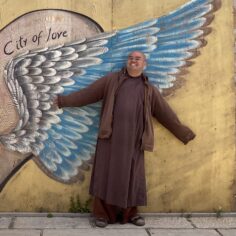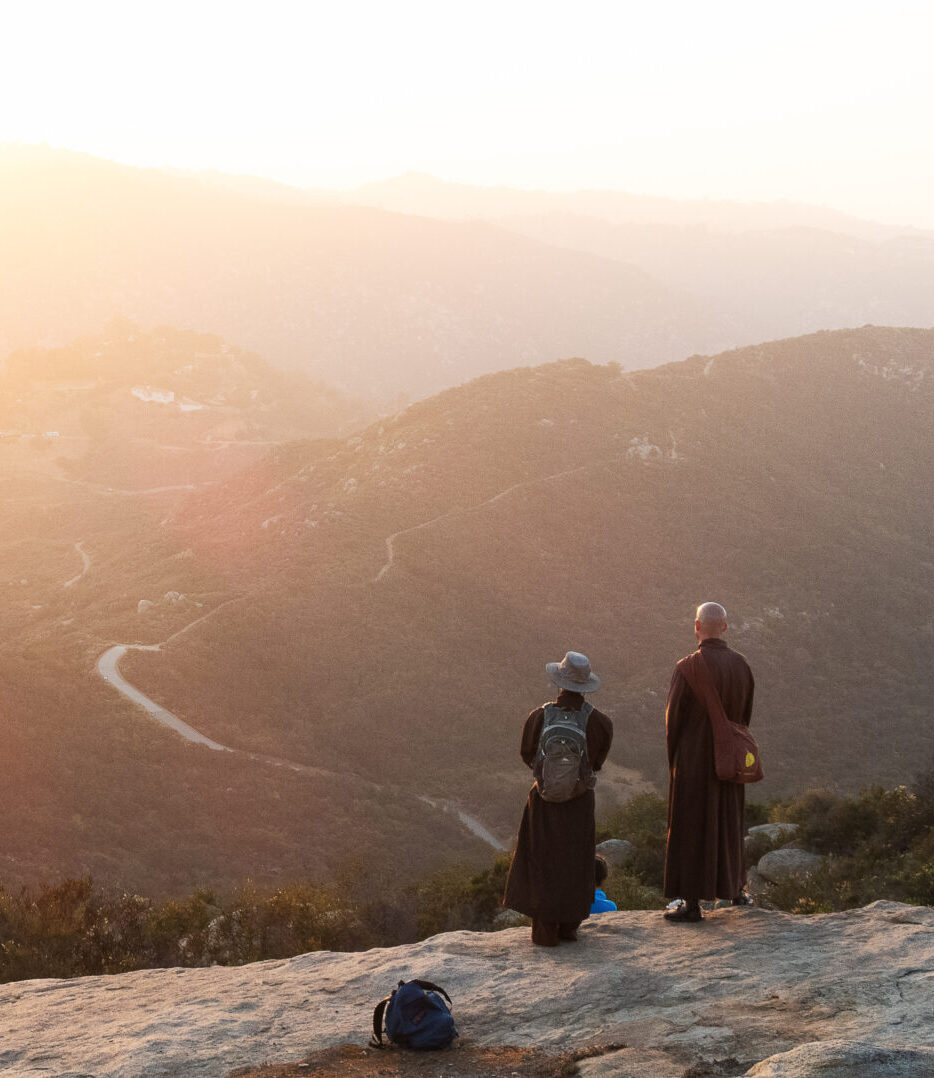Brother Chân Trời Đạo Bi reflects on the importance of being yourself, play as a Dharma door, and the support of living in community.
By Brother Chân Trời Đạo Bi on
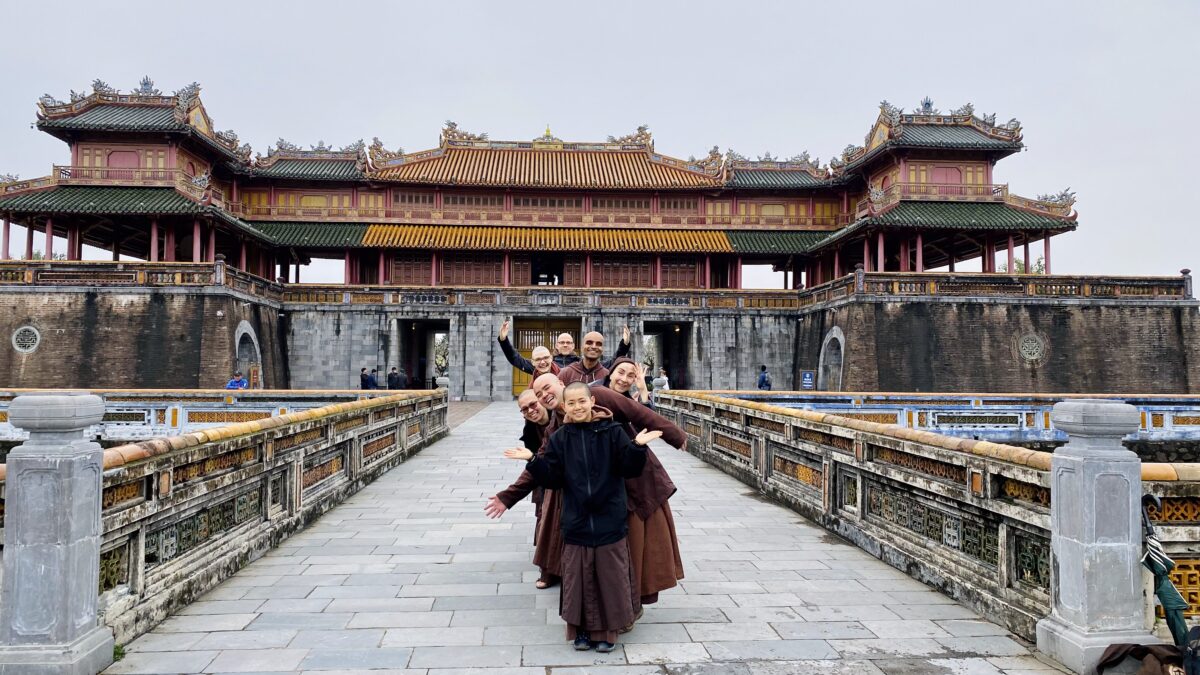
During the Wake Up Retreat in August 2024 at Plum Village,
Brother Chân Trời Đạo Bi reflects on the importance of being yourself, play as a Dharma door, and the support of living in community.
By Brother Chân Trời Đạo Bi on

During the Wake Up Retreat in August 2024 at Plum Village, France, I found myself lying awake every night. Every time I listened to enormous suffering, I wouldn’t be able to fall asleep. When this happened, I reminded myself of what Thầy used to do when he experienced that. Sometimes Thầy would lie awake at night and not be able to fall asleep. All Thầy did was just return to his breathing and embrace himself with his mindful breath. Thầy embraced himself, his people, and the whole planet with his mindful breath. One night, I realized that a mindful breath is an act of Earth holding. “Earth Holder” has been my koan since I’ve been involved in the Wake Up Earth Holder Community. I asked myself, “Why is this mindful Earth justice initiative called ‘Earth Holder?’” Since then, I have never underestimated a single act of mindful breathing, especially in difficult moments.
Storing the wood for the winter
The monastic path enables me to cultivate mindfulness through mindful breathing and mindful steps. Sometimes a feeling of boredom comes up when I find the schedule in Plum Village quite monotonous. Now I see that the schedule helps me to “store the wood for the winter.” If we did not store the wood before the winter, then we would not have enough time to dry the wood. When the winter comes, if we have stored enough wood, then the wood will be ready to keep us warm. And it’s more fun to chop and store the wood together! It’s the beauty of our community that we do everything together. It was my dream to live in a community. Now I’m living my dream, and I don’t take for granted each moment in this community. Breathing and walking mindfully together as a community strengthens my own practice, and I know that I’m storing the wood for the difficult moments.
One time, I was sitting by myself when I was facing strong emotions. Instead of numbing myself through distraction, I decided to sit with all the emotions and allowed myself to cry. It was my first time ever allowing myself to cry. I used to hold back my tears. Then I realized that crying is not a sign of weakness. It takes courage to tell myself that it’s okay to cry. I followed my breathing, and then I practiced mindful crying. Slowly, I felt better, and then I shared this experience with some of my spiritual friends on the path.
I started to see that I could benefit from collective listening. My own capacity to listen to myself is not as strong as the capacity to listen as a group. I feel fortunate that I have spiritual friends and brothers living together in Upper Hamlet; some of them are closer to me than my blood brother. We are sharing not only our joys but also our challenges. There is a saying in Indonesia: “A good friend is there for you when you experience joy (sukha in Sanskrit and Indonesian) and when you experience difficulty (dukkha in Sanskrit and Indonesian).” Nowadays, it’s easy to numb ourselves through distraction. When the suffering is overwhelming, we may consume things that are not necessary. In the community, we can resist these distractions together. I see that some monastic siblings have the same experience and aspiration, and we have become spiritual friends supporting each other.
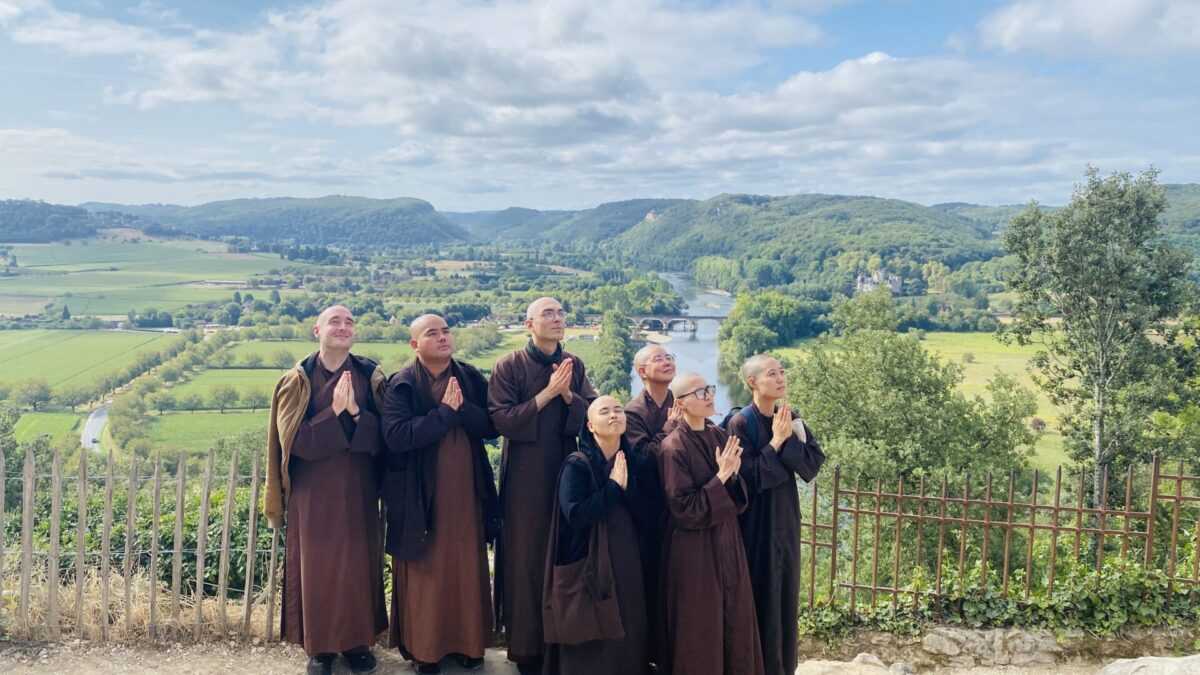
Be a monastic, be yourself
One day, when I was sitting and facilitating a Dharma sharing under the linden tree in Upper Hamlet, I was contemplating the linden tree. I realized that a linden tree is just being a linden tree. It gives shade and offers a refuge in the midst of the summer heat to many beings. When Thầy shared that a tree is just a tree, and if a tree is less than a tree, we’ll all be in trouble, I had not understood what Thầy meant. Then I came to realize that sitting under a linden tree, I just have to be a monastic. If I’m less than a monastic, then I will be in trouble! I’m still learning how to be a true monastic. When I facilitate Dharma sharing, all I have to do is sit and listen deeply. Then I can just be myself and feel “I am enough.” My aspiration is to be a monk, and as long as I know how to nourish this aspiration, then I can be a true monk. A robe is just an outer form. We need to know how to nourish the inner aspiration, our bodhicitta that makes us true practitioners. I have met many lay and monastic disciples of Thầy, and they keep inspiring me with the depth of their practice in their way of being and their mind of love.
Finding my roots, finding my true home
When I first heard the song “A Prayer for Land,” a poem by Thầy that has been put to music, it touched something very deep in me. For the first time, I was able to be in touch with the suffering of my great-grandparents, who migrated from China to Indonesia. They may have been in the situation Thầy wrote about in the poem. I have sung this song every day since then to be able to cultivate peace and healing within myself. Healing myself is also healing my ancestors in myself.
All my life, I was looking for roots. I never knew what my roots were. In Indonesia, where I was born and grew up, I never felt that my roots were in Indonesia. I experienced a lot of discrimination, and still some native Indonesian people don’t think that I’m Indonesian. I also think that the Chinese people would not see me as Chinese. In Plum Village, I learned to see that I’m made of many different ancestors: land ancestors of Indonesia, blood ancestors, and spiritual ancestors from China and Vietnam. They are all part of me. Once I was able to see this, I stopped searching for my roots. Roots are not something that we can find outside. When we can see our roots inside, we stop yearning and we can arrive in our true home. Thầy has shown us that a true home is not necessarily a physical home. Thầy found his true home regardless of physical space and taught us that we can find our true home in the present moment.
Renewing Buddhism in my homeland
I’ve been taking root in Plum Village, France, for more than nine years. Thầy’s Buddhism and the Plum Village monasteries are taking root in the West to respond to suffering in the West. I’ve been able to see that our tradition is not only responding to suffering in the West; people living in big cities like Jakarta, Indonesia, and other cities in Asia are experiencing the same, since the West and the East are deeply intertwined. Growing up in the countryside, I could see the difference in the suffering that people experienced in Indonesia and Europe. However, when I was living in Jakarta for some years, I could see that more and more people were experiencing suffering similar to the people in the West.
My deepest aspiration and dream is to bring Plum Village roots to Indonesia, my homeland. I can only do that when I have the roots in myself. I deeply treasure each moment of taking root and deepening my arriving here in Plum Village. My dream is coming true. We are starting to build a Plum Village monastery for monks and nuns in Bali.
Once, Thầy told his disciples that if we have an aspiration to renew Buddhism in our homeland, we need to renew ourselves first. I’ve been able to see that my body and mind have been renewed continuously since I came here. I often remind myself that there are many things I still need to renew and learn as a young monk, and I need to continue renewing and learning at every moment.
I had the opportunity to visit the new land in Bali in February 2023 with Sister Chân Không and some monastics. We did the land blessing and it was a deeply moving experience to see that my dream is slowly coming true. The aspiration to build a Plum Village practice center has been there since Thầy visited Indonesia in 2010, when I first met Thầy and the Sangha. There were some obstacles to building a center in Java, near Borobudur, as Thầy had wished, until we finally let go of this idea since we were not able to get the permission to build the center there.
I was deeply in touch with the spiritual ancestors in Bali and finally I could see that my spiritual ancestors are not only from Vietnam and China but also from Bali. When I went to visit some Hindu temples in Bali, I could experience that and accept them as my spiritual and land ancestors.
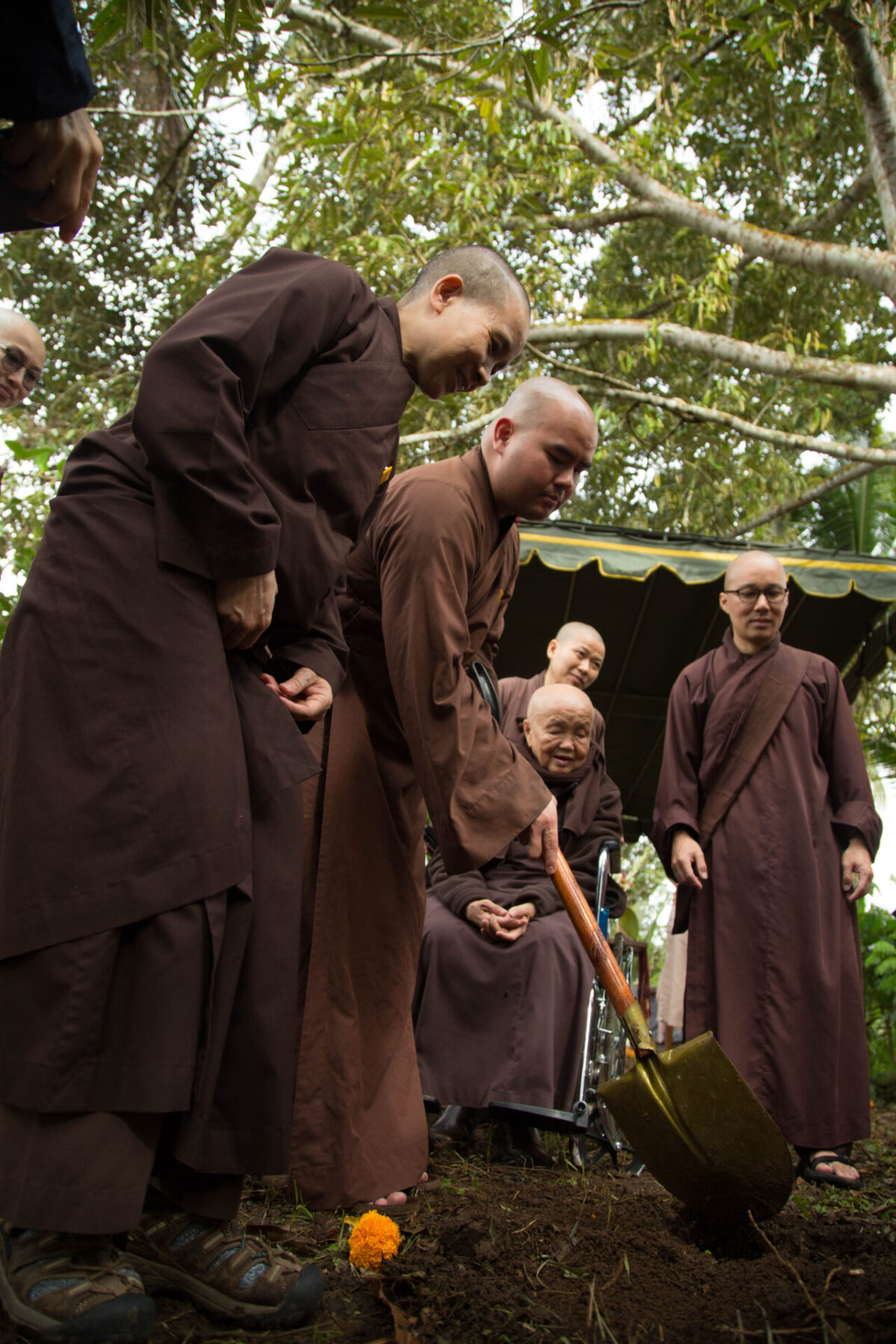
Taking roots in Wake Up communities and deeply understanding Thầy’s Buddhism
Before ordaining, I was practicing in Wake Up sanghas in Indonesia. Some of my Wake Up friends helped me to feel at home in the sangha, and then slowly I was able to feel more at home in my family and bring reconciliation and healing to my family. I’ve been serving on the European Wake Up Care-Taking Council (or as we call it, Oomph: Organism for Optimizing Many People’s Happiness) for six years. I see some friends in the Oomph family as my true brothers and sisters on the path and they help me to feel at home in Europe.
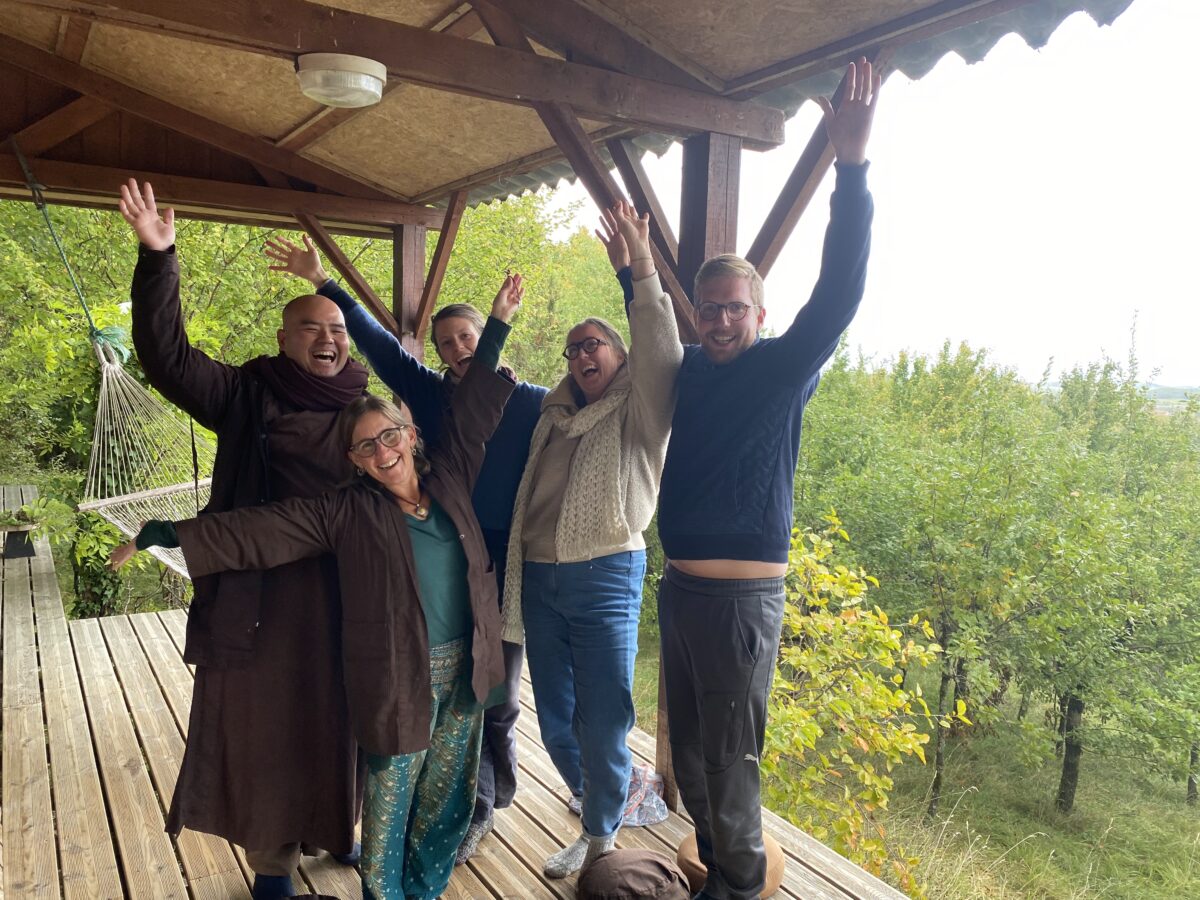
When I participated in the Wake Up Retreat in Thailand with some sangha friends from Wake Up Indonesia in 2013, we offered the Wake Up song to Thầy, thanks to some Wake Up practitioners in the United States who composed this song and created the mudras (hand movements). Ten years later, at the “Love in Action” Wake Up Retreat, my Dharma sharing family offered this song and invited everybody to offer this song to Thầy in our hearts and everywhere around the Buddha Hill, where we had scattered Thầy’s ashes.
I used to sing this song with my Wake Up sangha in Indonesia. After I ordained, it took me years to realize that I could also rap as a monk! Thanks to Brother Pháp Hữu for inspiring me and some other young monastics to rap and for showing us that this is Thầy’s Buddhism. He shared that some monastics were not happy about him rapping, but Thầy encouraged him to rap and said to him that this is Thầy’s Buddhism. When I heard this story, it helped me to see more clearly the renewed Buddhism Thầy has offered and let go of some ideas I had about monastics.
Thầy has offered us a lot of skillful means in the renewed Buddhism. I see rap as a skillful means and a Dharma door to attract young people. Some people who have certain ideas about monastics may not be able to see this as a skillful means and not accept this. Thầy has immense courage in offering relevant Dharma doors to respond to suffering, inspire more young people to ordain, and continue Thầy beautifully into the future.
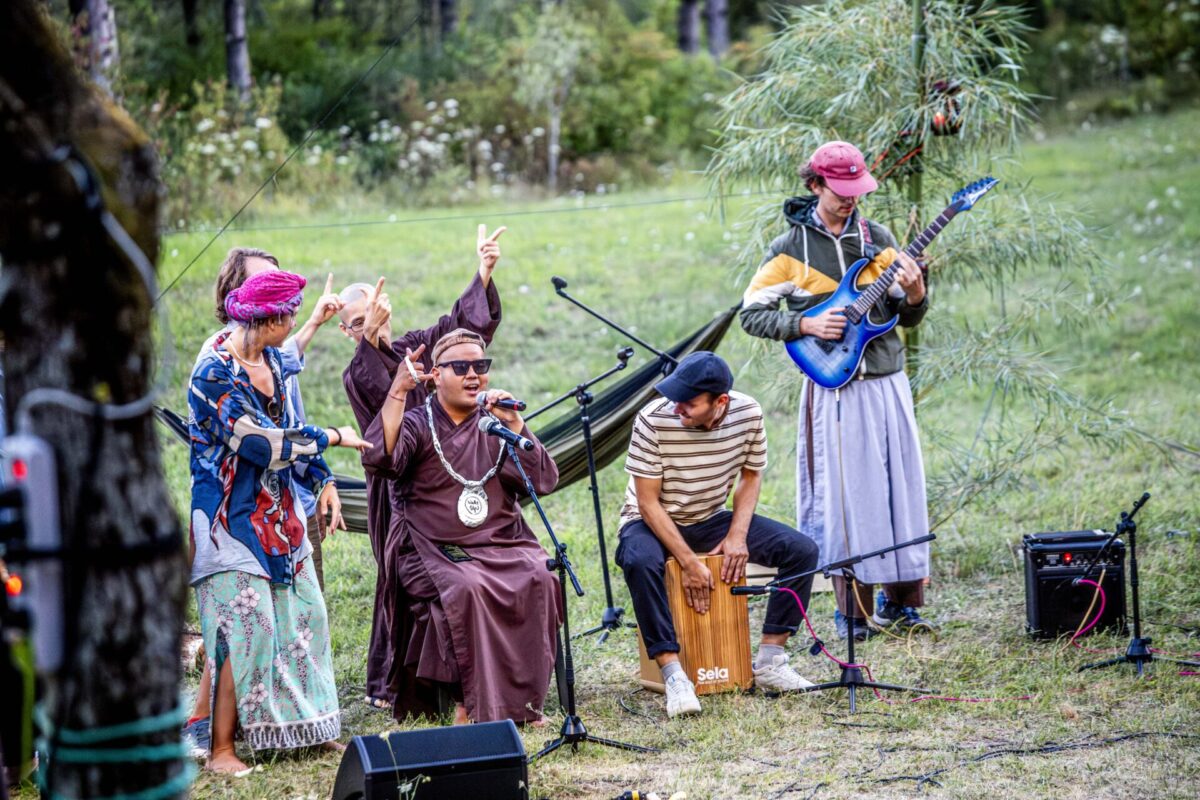
Play as a Dharma door in the West
The word “chơi,” as one of the four pillars in the Plum Village tradition (study, practice, work, and play), is often translated as “play.” Some monastics interpret it as joy, relaxation, or “let’s go with enjoyment.” In my article about play, “Let’s Play: Go with Enjoyment!” for The Mindfulness Bell in 2019, I wrote about the story when Thầy was asked, “How can Western sisters and brothers become closer to each other like the Vietnamese sisters and brothers?” Thầy answered, “It’s not about Western sisters and brothers, but also I think that people can become closer to each other if they play together. So I suggest that Western brothers and sisters need to play a bit more, and be more relaxed. Because you think that playing like that is not a practice physically.”
I heard this story when the sangha went canoeing for the first time, and how it helped change the atmosphere in the sangha tremendously. When we see each other play, it changes our perception of each other. We cultivate joy and become closer to each other. During the monastic retreat in 2024, we watched the movie Cabrini, one of the fun things we do as a monastic sangha. I was deeply impressed by the story of how a Catholic nun tried to bring changes to society and cared for the poor and the sick. When I was actively engaged in a Buddhist youth organization, I found joy in helping the poor and the sick. After watching the movie, I realized that Thầy offered the Dharma doors to respond to the suffering in the West. Some people may not need food and shelter as the poor and the sick do, but they may need healing in their hearts. Thầy offered the Dharma doors such as deep listening and play for us to heal the wounds in our hearts. This is Engaged Buddhism that later on had developed into Applied Buddhism. Thầy shared about Applied Buddhism when he visited Tzu Chi in Taiwan, a Buddhist foundation that truly cares for the poor and the sick. Thầy’s sharing at that time helps me to understand Engaged Buddhism or Applied Buddhism more deeply. I deeply admire Thầy and Sister Chân Không’s work for the poor and the sick from the time of the war in Vietnam until now. Applied Buddhism is more than charity work. Some people are poor and sick in their hearts. Thầy experienced depression, war, and loss of beloved ones. Thầy found the way out, and therefore Thầy offered medicine for us to heal our hearts and minds.
I see play as a Dharma door, and play responds to the suffering of our time: loneliness. This kind of suffering is experienced not only by people in the West, but also by people living in big cities in Asia, where individualism is more prevalent. Some people may find it challenging to live together with many people, but community living is also a Dharma door to respond to loneliness. When we overcome the challenges, we can see how the brothers and sisters in the Sangha help us in our practice. I deeply treasure the presence of each brother and sister in the community. When we cultivate true friendship, brotherhood and sisterhood, and harmony in the sangha, then we can build a community of resistance—which is our response to suffering in the world. We can only respond to suffering in the world when we know how to respond to suffering in ourselves and in our community.
Thầy often shared with us that a teacher helps show us the path, but spiritual friends offer support and guidance along the path when a teacher may not be able to do so. I feel very fortunate that I have brothers and sisters or spiritual friends in the community who are always there when I experience joy and difficulty. One of my spiritual friends, Brother Thien Y, offered me calligraphy: “The path of compassion is endless, but together is a lot of fun!” I have immense gratitude to Thầy for showing us that the path can be fun and we don’t have to take the practice too seriously.
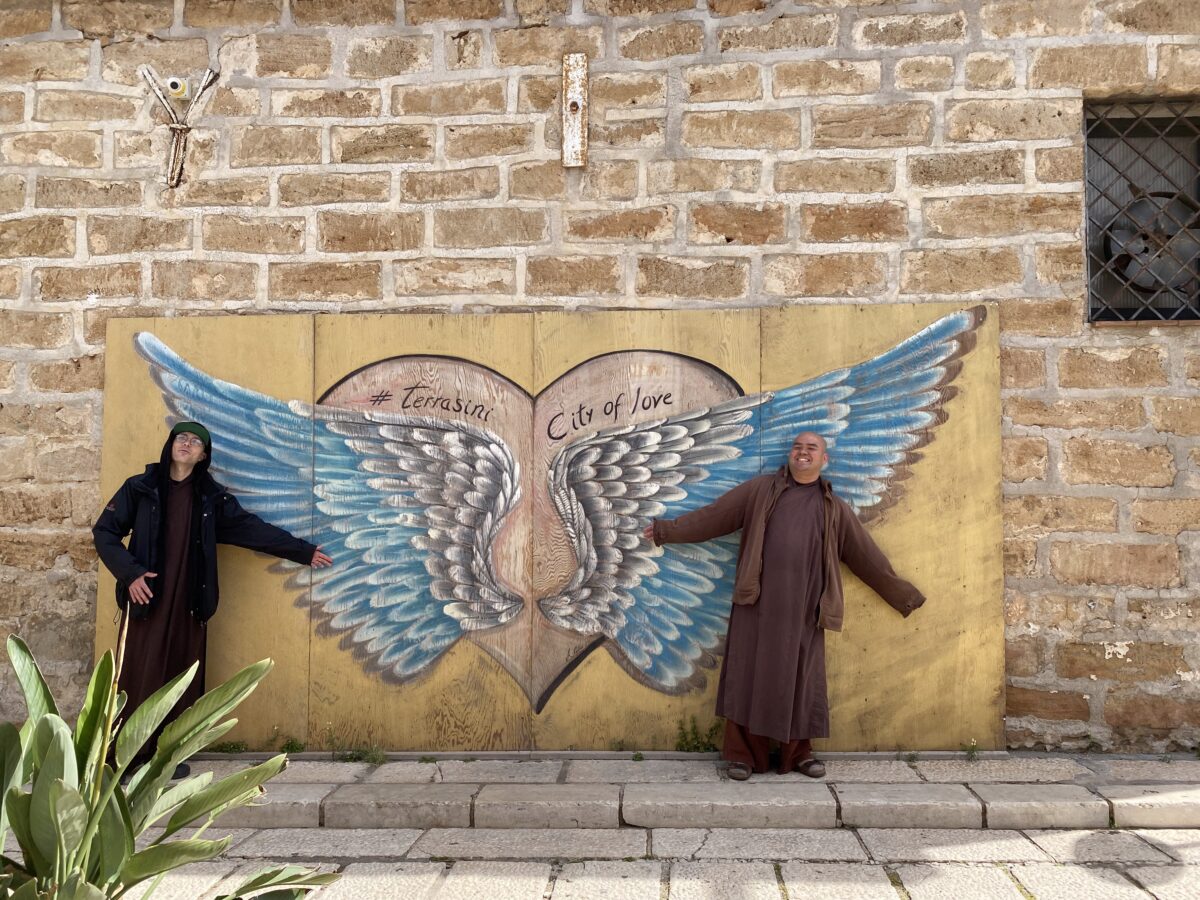
Continuing Thầy beautifully into the future
I deeply appreciate the elder brothers and sisters in our community who share stories about Thầy that can help us understand Thầy’s Buddhism deeply. Through their Dharma talks and sharings, I get to see how they’ve understood Thầy’s teachings deeply. They are able to continue Thầy’s work in renewing Buddhism and be a soulmate of Thầy. Thầy has shown us the path and how to be soulmates of the Buddha. All we need to do is continue Thầy and follow in his footsteps.
May the Sangha practice diligently,
showing love and concern for one and all,
just as for our very own family,
transforming our hearts and minds
we aspire to follow all Great Beings.
This is my favorite line from the “Praising the Buddha” chant that I often recite to myself to remember again my aspiration to practice showing love and concern for one and all. I’ve been able to see my monastic and lay siblings as my own brothers and sisters. They are all part of this big spiritual family. Our love for one another can contribute to the collective awakening, as I’ve learned that awakening is love and understanding itself. The sangha has embraced me so I’m able to love myself and accept myself as I am. Only when we are able to show love and concern for ourselves can we show love and concern for others and build brotherhood and sisterhood. Another one of my favorite lines from this chant is “May compassion cool the flames of the world, and wisdom shine through the clouds of confusion, revealing to all the path.” Our love and compassion can help cool the flames of the world. Our collective insight and wisdom is like a torch lighting our path and revealing the path to all.
